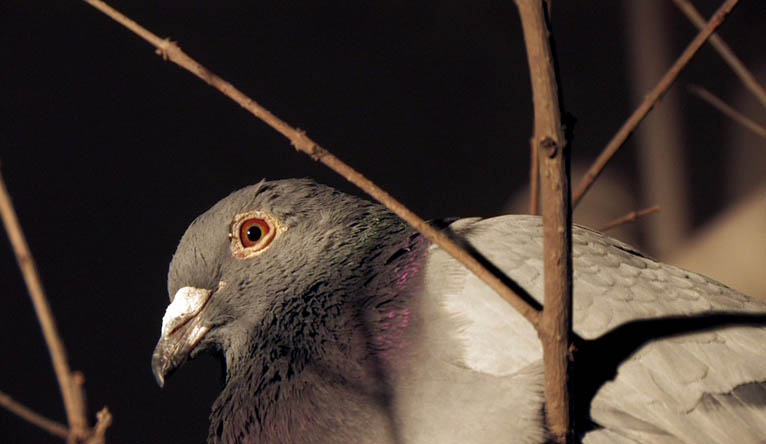THE TELL-TALE HEART
| June 1, 2010 | Post In LEAP 3

This exhibition reminded me of nothing so much as Akiko Busch’s book, Geography of Home. The garden, the hall, the courtyard and the other rooms of the interior all maintain the original structure of the building, yet override the blueprint’s vision for the space with postcolonial charms that offer a sense of traveling perspective (the gallery space is located on the ground floor of an old building in the French Concession, revealing an interior design that fuses architectural tropes of both China and the West). Yet for ambitious contemporary art curators and artists alike, the spatial constraints are undoubtedly limiting.
Among the seven works on display were Thai director Apichatpong Weerasethakul’s video installation Morakot (Emerald), Zhang Ding’s nine-screen video installation The Dream of Yabulai and Feng Mengbo’s interactive video game Long March: Restart. Merely fitting so much work into just two hundred square meters of exhibition space is no small task. Fortunately, once the gallery’s white rooms have been darkened, the sense of residential space diminishes. Ultimately, the most successful pieces gain something from this unconventional exhibition design, which assigns a home to each piece.
The show seems to begin with a question, in the narrow, cramped space of the vestibule where Cheng Ran’s Rock Dove looms over the viewer both physically and metaphorically, projected such that you cannot see it without creaking your neck. In five minutes of video, several doves are shut inside a dark room, then exposed to sudden bursts of artificial light, causing them to alight in a frightened dance. This is a moment not unlike the painful improvisations of Pina Bausch’s best dances—high-contrast images, with light that starts to make people lash out against the braying, shrieking sounds, while the observers’ muscles tense up and feelings of unease accumulate and wash over them. But beyond the strong, frightening feelings of love, something different emerges that is not generated by the image itself: a traditional flower-bird scroll painting which becomes a violent strobe, as in Hitchcock’s The Birds.
Morakot (Emerald) occupies the living room. The projected image gradually surveys the empty space of a hostel, an abandoned room bearing the scars and stains left by travelers passing through. On top of a pillow weathered from age, a ghostlike portrait of a face appears, a person turning while asleep and dreaming. Off-screen, two men and a woman mutter to each other about the passing of youth. The woman utters the word “emerald” in Thai, and illuminates a personal memory from beneath the dark depths. Beyond the frame of the exhibition screen, in the center of the atrium, an emerald lamp stands upright, shining. The light’s shadow takes the projected image and cuts it into two mysteriously deep halves.
By way of context, the Morakot hostel lies in Bangkok’s city center. In the 1980s, as the Thai economy boomed, the hostel, like countless others of its kind, became a place for Cambodian refugees to land. The coming and going of cheap labor also gave Morakot experiences of both prosperity and decline. Today, the physical evidence of this presence endures, and the fading memories have been recorded in an image to which has been added a sky full of floating willow catkins. They drift everywhere, floating silently through the air. Only in the mobile gaze of Apichatpong’s shot can they be crossed through and stirred.
Clearly, the central positioning of Apichatpong’s piece establishes a theme for the entire exhibition. The specter of Edgar Allen Poe’s “Tell-tale Heart” never quite departs the exhibition, but as in Morakot (Emerald), personal narrative functions like and abandoned hostel, which in the end is a graveyard, where memories are buried, and sometimes, ghosts return to haunt. Aimee Lin

